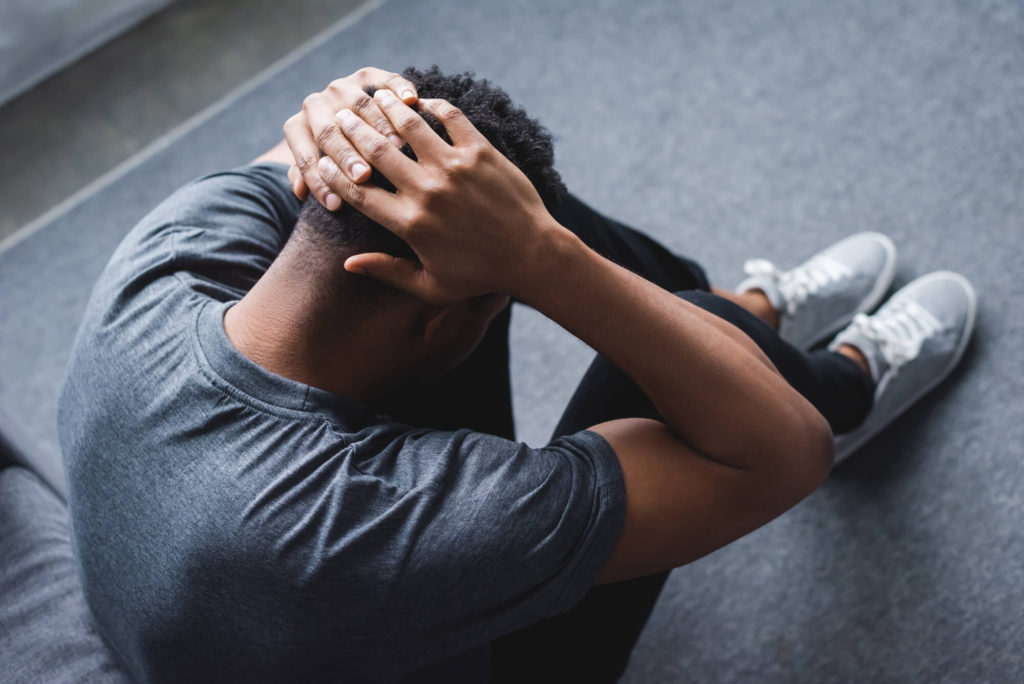
The American Psychiatric Association (APA) established that around 18% of adults in the United States (US) have a diagnosable mental disorder in a given year, and 4% of US adults have a serious mental illness. Some mental illnesses include depression, anxiety, post-traumatic stress disorder, and psychotic disorders.
These mental illnesses do not discriminate against a person’s culture, race, ethnicity, gender, age, and sexual orientation. It is also important to note that the US population is diverse and consists of different cultural and identity backgrounds, including Asian Americans/Pacific Islanders, Black/African Americans, Hispanic/Latinx, and Indigenous/Native. These cultural and identity differences bring a set of unique struggles that affect these BIPOC (Black, Indigenous, and People of Color) communities in the US.
These BIPOCs’ cultural and identity backgrounds play a role for mental health professionals to ensure a mental illness is correctly diagnosed and followed by tailored treatments. However, there are barriers to mental health care among minorities. In this post, we will cover the disparities in mental health service use, identity and cultural dimensions, the common barriers to mental health care among minorities, and how to find the right mental health professional.
Disparities in Mental Health Service Use
The APA noted some mental health disparities in diverse populations in the US with most racial/ethnic minority groups having similar (or even fewer) mental disorders than whites. However, minority groups are less likely to receive mental health care treatment that results in long-term mental health issues. An example the APA provided in 2015 indicated that 48% of White adults received mental health services compared to 31% of Blacks and Hispanics, 22% of Asians, and 46% of those who identify with two or more races.
There’s also evidence from the APA stating that racial/ethnic minority youth with behavioral health issues, such as defiant or disorderly behavior, are referred to the juvenile justice system instead of mental health primary care compared to White youths. Furthermore, some mental health treatments involve outpatient, prescription, or inpatient services, which are used more frequently by BIPOC communities. Whites, Indigenous/Alaska Natives, and those who identify themselves with two or more races received outpatient mental health care services and are more likely to use prescription medications than other minority groups. Inpatient services are used more frequently by Black adults and those who identify themselves with two or more races, and Asians are less likely to use mental health care services than any of the other minority groups.
The National Alliance on Mental Illness (NAMI) established that cultural differences and a person’s identity influence how diagnoses and tailored treatments are made, and it affects coping mechanisms. As such, NAMI states that it is essential to consider both culture and identity of an individual as they go through both mental health and mental health care treatment.
Identity and Cultural Backgrounds and their Common Barriers to Mental Health
Understanding the cultural and identity differences among the BIPOC communities helps mental health professionals correctly diagnose a mental health illness and create a treatment plan that incorporates cultural needs. Below we provide some of the common barriers each racial/ethnic group faces followed by how to find the right mental health care provider.
Asian American and Pacific Islander
Asian American and Pacific Islander (AAPI) communities encompass a wide range of diversity with around 50 distinct ethics groups who speak over 100 different languages. According to NAMI, AAPIs have a “sense of communal identity, connections, belonging and family bonds is a strong predictor of resilience.” However, AAPIs do not receive as many mental health care treatments. Some of the common barriers AAPIs face include the following:
- Language barriers: Immigration to the US is what drives population growth, and as such, English is not the primary language. Around 30.9% of Asian Americans consider themselves not fluent in the English language, which provides a barrier to receiving mental health care treatment.
- Stigma and shame: Stigma comes into play when an individual doesn’t want to feel disapproval from their community or when someone in their community shames them for having mental health issues. Because they don’t want others to find out or fear negative opinions that may affect their reputation, AAPIs often don’t seek help until there is a mental health crisis.
- Model minority myth stereotype: This stereotype refers to the well-adjusted, strong work ethic, socioeconomic success, and the need to excel academically compared to other groups. It creates social pressure to meet those societal or familial expectations, which can lead to mental health issues.
Other barriers AAPIs face include insufficient or lack of health insurance coverage, immigration status, and faith and spirituality.
Black/African American
The APA indicates that only one in three Black/African American adults with mental illness receive treatment and face some health challenges. According to the APA, some of the health challenges include a lack of health insurance (around 11% are not covered), less likely to receive consistent care, less included in research studies, and are more likely to use the emergency room than mental health providers. Some of the common barriers Black/African Americans face include the following:
- Socioeconomic disparities: Many suffer from social and economic differences, and they are excluded from resources, including health and education, that contribute to suffering from mental health issues and trauma.
- Stigma: Many Black/African Americans view suffering from a mental health illness as a personal weakness that worries them about how they are perceived by others in their community. It prevents them from seeking help from mental health care providers, and instead, they turn to their faith institution. These faith institutions certainly help in the recovery process, but a treatment plan is required to help with mental health symptoms.
- Provider bias and inequality of care: Historically, there’s no doubt that Black/African Americans have suffered and continue to suffer from racism, prejudice, and discrimination in the US healthcare system, which leads to provider bias (either conscious or unconscious), misdiagnosis, and ineffective treatment.
Learn more by reading our “The Mental Health Disparity in Black Communities” post as it contains further details and mental health resources.
Hispanic/Latinx
The Hispanic/Latinx community in the US is diverse as it includes people from different countries, including Mexico, Puerto Rico, Cuba, Central America, and South America. Even though there are some similarities between these, such as the language, religion, and connection within the family and the community, there are differences in their cultures and barriers they face to receive mental health care. Some of these barriers include the following:
- Poverty and less health insurance coverage: According to the US Census, Hispanics have a poverty rate of 17% in the US which leads to a higher risk of suffering from a mental illness. Along with a lack of health insurance, it makes Hispanics/Latinx people unable to seek help.
- When there is a lack of cultural competence or the wrong interpretation of an ailment or symptom description, there is a risk of receiving a misdiagnosis and mistreatment.
- Legal status: Many fear deportation due to their legal status, which leads to not seeking help.
Other common obstacles include language barriers, stigma and shame, and acculturation (how they learn and incorporate into a new culture or experience culture shock).
Indigenous/Native
According to the US Census, around 5.2 million people in the US identify themselves as American Indians or Alaska Natives, but the term American Indian is misleading as indigenous/native groups were present in the US before colonization. Due to their history, many Indigenous/Native suffer from historical trauma, economic impact, discrimination, and lack of opportunities that lead to mental health illness while facing many barriers to their mental health care. Some of these barriers include the following:
- Inadequate funding: An exchange exists between the US federal government (providing health, safety, and welfare) and tribal nations (tribal lands), but despite this exchange, there’s been underfunding to the Indian Health Service that affects the resources available for mental health care.
- Rural and isolated locations: Due to these rural and isolated locations, oftentimes it is difficult to receive or have access to mental health care services.
- Mistrust of federal government services: Due to historical trauma the Indigenous/Native have faced, they don’t trust any of the services provided by the government.
Other common barriers include lack of cultural competence, language barriers, poverty, and unemployment.
How to Find the Right Mental Health Professional
It’s important to seek out a competent provider who understands the culture and traditions of a minority group. You can ask them questions to determine if the mental health care provider will have the cultural and identity knowledge to provide you with treatment. Some of the questions NAMI recommends for you to ask providers include the following:
- Do you have experience treating other [insert minority group] people?
- Do you have any training in cultural competence and mental health?
- How will our cultural backgrounds influence the way we communicate and how we will be treated?
- Do you have trauma training?
Then ask yourself if the provider communicated well with you and if they are willing to integrate your identity and background into a treatment plan. We have also listed below some mental health resources targeted specifically to the BIPOC community.
BIPOC Mental Health Resources
- Asian American/Pacific Islander: Anxiety & Depression Association of America & National Asian American Pacific Islander Mental Health Association (NAAPIMHA)
- Black/African American: Black Emotional and Mental Health Collective & Black Mental Health Alliance
- Hispanics/Latinx: American Society of Hispanic Psychiatry & Therapy for Latinx
- Indigenous/Native: Centers for Medicare & Medicaid services American Indian/Alaska Native Information and Resources, Indian Health Service & One Sky Center
At Alvarado Parkway Institute, we believe in providing minorities with mental health care and understanding our patients’ barriers. If you or someone you love needs mental health treatment, visit our Center for Mental Health & Addictive Disorders for more information.
Sources:
- https://www.psychiatry.org/File%20Library/Psychiatrists/Cultural-Competency/Mental-Health-Disparities/Mental-Health-Facts-for-Diverse-Populations.pdf
- https://www.nami.org/Your-Journey/Identity-and-Cultural-Dimensions
- https://www.psychiatry.org/File%20Library/Psychiatrists/Cultural-Competency/Mental-Health-Disparities/Mental-Health-Facts-for-African-Americans.pdf
